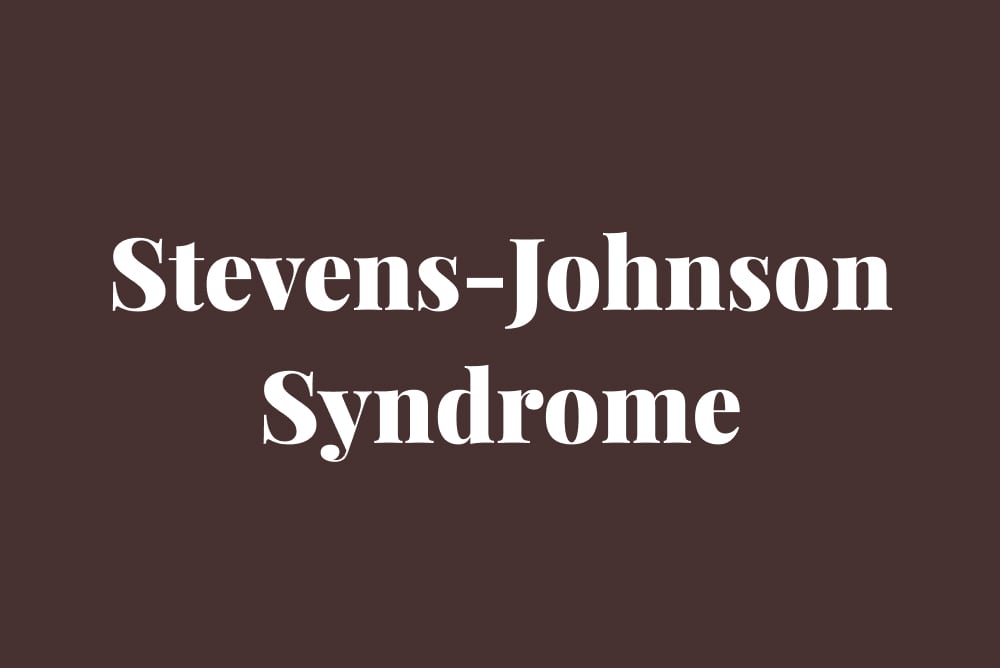Stevens-Johnson Syndrome Symptoms

Stevens-Johnson Syndrome (SJS) is a rare, serious disorder of your skin and mucous membranes. It’s usually a reaction to a medication that you may have received from your NYC doctor, or it could be the result of an infection. Often, SJS begins with flu-like symptoms, followed by a painful red or purplish rash that spreads and blisters, eventually causing the top layer of your skin to die and shed. While it is not contagious, which is good news for the rest of the population of New York City as well as New York State, it is something you will want to have treated promptly.
Your reaction may start with fever, sore throat, and fatigue, which is commonly mistaken for an infection such as the flu. However, over the course of several days, you may notice the development of painful blistering lesions on your skin, including red or purplish spots that spread and coalesce. The lesions can involve your eyes, mouth, nose, genitals, and lower respiratory tract, and can lead to various complications ranging from eye problems to severe systemic infections.
Prompt recognition and treatment of SJS is crucial to minimize complications and improve outcomes. If you experience symptoms such as a rash that spreads and blisters, or if you notice the involvement of your mucous membranes, which is the hallmark of SJS, it’s imperative to seek medical attention immediately at a hospital in your nearest New York jurisdiction. Early intervention can help halt the progression of SJS and initiate the healing process, but long-term management and monitoring may be necessary to address any complications.
Clinical Manifestations
Stevens-Johnson Syndrome (SJS) presents a range of symptoms primarily affecting your skin and mucous membranes. As you read on, you’ll learn about the specific symptoms related to mucous membranes, eyes, and genitals.
Mucocutaneous Symptoms
Your skin may exhibit red or purplish rashes that spread and blister, leading to painful erosions possibly resembling burns. The mucous membranes, particularly of your mouth, throat, and nose, are likely to develop swelling and ulcers making eating and swallowing difficult.
- Common sites of mucocutaneous symptoms:
- Mouth
- Eyes
- Nasal passages
- Anogenital regions
Ocular Involvement
In your eyes, SJS can manifest as conjunctivitis (redness and inflammation), with symptoms ranging from mild irritation to severe pain. In some cases, you may experience photophobia (sensitivity to light), blurred vision, or in severe instances, corneal blisters and erosions that can lead to vision impairment.
- Eye symptoms may include:
- Redness and itching
- Tearing or discharge
- Pain or burning sensation
- Eyelid swelling
Genital Manifestations
SJS may cause painful ulcerations on your genital mucosa, including on the glans, labia, or surrounding areas. This can result in discomfort during urination and an increased risk of secondary infections.
- Genital symptoms might involve:
- Rash or redness
- Blistering
- Ulcerations
- Swelling
Diagnosing Stevens-Johnson Syndrome
When you suspect Stevens–Johnson Syndrome (SJS), it is crucial to seek medical attention immediately. Your New York City healthcare provider will typically begin with a thorough medical history and perform a physical examination, focusing on your symptoms and any recent medication use or illnesses. Key indicators for SJS include:
- A rash that is rapidly spreading
- Blisters on your skin and mucous membranes
- The presence of target-like lesions
- Painful skin that looks burned
To confirm the diagnosis of SJS, your doctor may order specific tests:
- Skin biopsy: A small sample of affected skin is examined under a microscope.
- Blood tests: These can help rule out other conditions that might cause similar symptoms.
- Cultures: Taking samples from the skin or mucous membranes to test for infections.
Be aware that there are no specific lab tests that can diagnose SJS, but these tests can help confirm the diagnosis and exclude other conditions that may be similar in symptoms that could be contagious to your fellow New Yorkers. Moreover, it is important to inform your doctor about all the medications you’re taking, as SJS is often a reaction to medication.In summary, diagnosing SJS in the state of New York involves a clinical evaluation and supporting tests to rule out other conditions. Your healthcare provider will guide you through this process and should you experience any new symptoms or have concerns, convey them promptly to get the best possible outcome from your New York healthcare team. You’ll also want to discuss the potential for legal matters resulting from this diagnosis with a Long Island personal injury lawyer.


